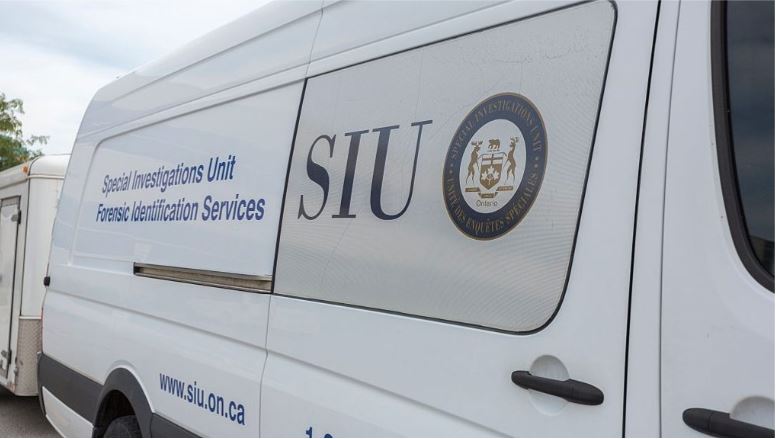Ride along in Renfrew County: Challenges launching palliative paramedicine model under glare of COVID-19
Posted Nov 24, 2021 03:24:00 PM.
This is part two in a three-part series by Bruce McIntyre.
There are only 14 community paramedics with the specialized training for the new Palliative Care Pilot Project that has only been up and running for less than a year in Renfrew County.
The paramedic management team will be the first to tell you it is a work in progress. Protocols and policies are added nd removed as warranted.
Although it may seem like a distant memory today, when the number of COVID-19 cases began to steadily increase in March and April of 2020, there were several models predicting the possibility of mass casualties.
Renfrew County Chief of Paramedic Services Mike Nolan often left teleconferences where the worst-case scenarios had hundreds of emergency cots being set up in hockey arenas across his region. If needed, those cots would become part of the temporary field hospitals dealing with those infected with the virus.
When that horrific scenario started to play out in American cities like New York and Dallas, Chief Nolan felt like it could happen just about anywhere in the world, including in Renfrew County.
He realized there had to be a system in place to care for and monitor the elderly and isolated individuals, as statistics revealed they were the most vulnerable.
Amber Hultink, a 10-year veteran with the service and recently appointed as the first female commander of a paramedic land base, had just returned from a one-year educational secondment. She was seconded with the Canadian Foundation for Healthcare Improvement in Ottawa where she was the lead paramedic on a national project to train paramedics in palliative care.
When she returned to active duty, Nolan handed her the file and she was tasked with developing and launching the new palliative care pilot project.
A major part of her new assignment was applying her knowledge and new skill set, and seek out other agencies and individuals committed to the same goal.
They needed to develop a program for about 600 vulnerable residents located in some of the most remote areas in the catchment area. Hultink was racing the clock to being the process, knowing full well the base number of 600 could quickly escalate if the COVID-19 pandemic gained traction in the Valley.
“Like everyone else, we were thrown into the middle of the pandemic with little to go on, but one thing was emerging in the early days and that was the senior population was getting hit the hardest,” Hultink said. “We all hoped the predictions of potentially having thousands of COVID patients was not going to happen, but we had to prepare, and that meant helping residents who contracted COVID or other terminal health issues to consider the option of staying in their homes. If the situation became dire as it did in the U.S. then there would be nowhere for the vulnerable to go.”
So began the task of developing a working group to deal with a potential spike in residents who may choose to die in their homes and developing an evolving model that could react to be able to react to sudden changes and adapt to whatever conditions COVID-19 may present.
Hultink began developing the palliative program knowing the primary role was to fill a gap and to find a way to help all health care providers and patients through the pandemic by limiting the strain on limited resources.
She looked around for community partners and one of the first persons she turned to was Dr. Katie Forfar.
She was a young and energetic physician who specialized in palliative care and had recently began practicing at the Whitewater Bromley Community Health Centre in Beachburg. The daughter of a fire fighter, Dr. Forfar knew the vital role of first responders and was a natural fit for the new program. Along with Hultink and fellow physician Dr. Declan Rowan, they began developing protocols and training modules designed for paramedics.
“There certainly was a shift in thinking that we were asking of paramedics,” Dr. Forfar said. “They are trained to quickly assess a patient, provide immediate care and transport for further medical assistance. Now we were asking them to slow down, re-evaluate and determine if there is a viable way for them to allow the patient to remain in their homes and avoid transport to hospital. This diagnostic long-term approach was opposite of traditional training for a paramedic.”
Both Hultink and Forfar were aware the working group was developing a plan on the go, but they also knew there was a possibility they may be faced with hundreds of patients who may die at home. There was always the chance, although it diminished as vaccines began to arrive, but if the number of COVID-19 patients forecast in the worst-case scenario models came true, there would be hundreds of patients dying at home and the paramedics were the last line of resources to assist and help provide care for them.
The core group, consisting of a Hultink, a Palliative Care Coordinator, a Palliative consultant, Forfar and Rowan, and two senior paramedics, developed a model which has now been employed for the last year and it is being touted as a model for other jurisdictions.
“It is hard to believe more than a year has gone by, but we are proud of what we have accomplished and it is a success because of the special men and women in our service who are able to go into a stranger’s home and help them with their basic medical needs. The paramedics at times feel like they have become part of an extended family.”
The core group of paramedics completed a rigorous training module that was developed by the ad hoc working group and once completed, both Forfar and Rowan signed off on the medical requirements, with a new provision allowing paramedics to administer narcotics to alleviate severe pain or deal with those experiencing shortness of breath.
Prior to this new program, standard procedure likely would have included transfer to hospital via ambulance. However, this was one more system put in place and showing results. The program was reducing the strain on local Emergency Rooms.
They must be doing something right as the program and its members are the focus of a new peer-reviewed Australian medical journal article set to be published in the new year. Renfrew County is one of the few regions to incorporate palliative care into the paramedicine program.
“We have had other regions from across Canada contact us and we have shared our lessons learned, but we have also shared our successes and that is something we are all proud of,” Hultink said. “We don’t have all the answers and we are learning something every day — what works, what doesn’t — but we keep moving forward and the paramedics who make the commitment to our palliative care unit are the ones who are helping us make the program better.”










